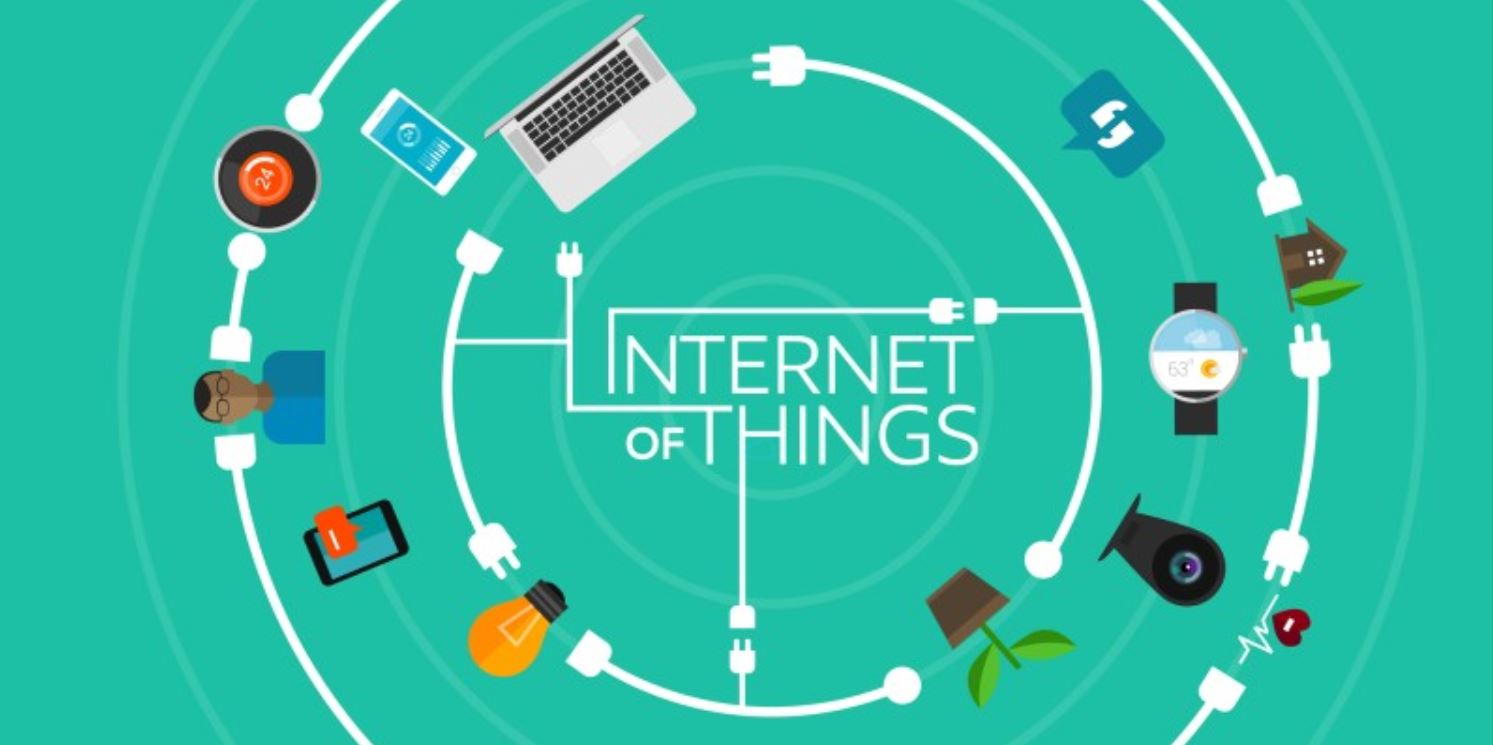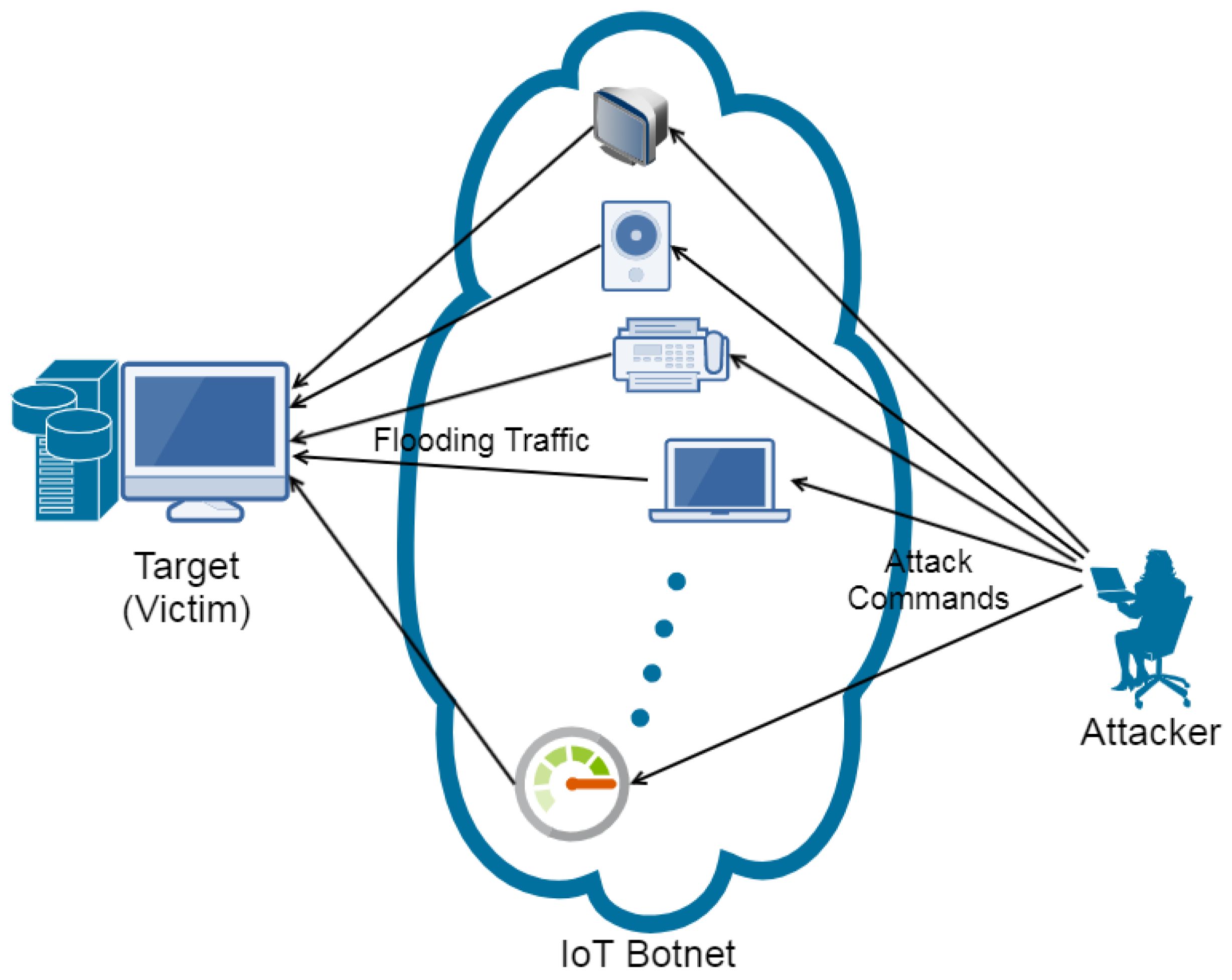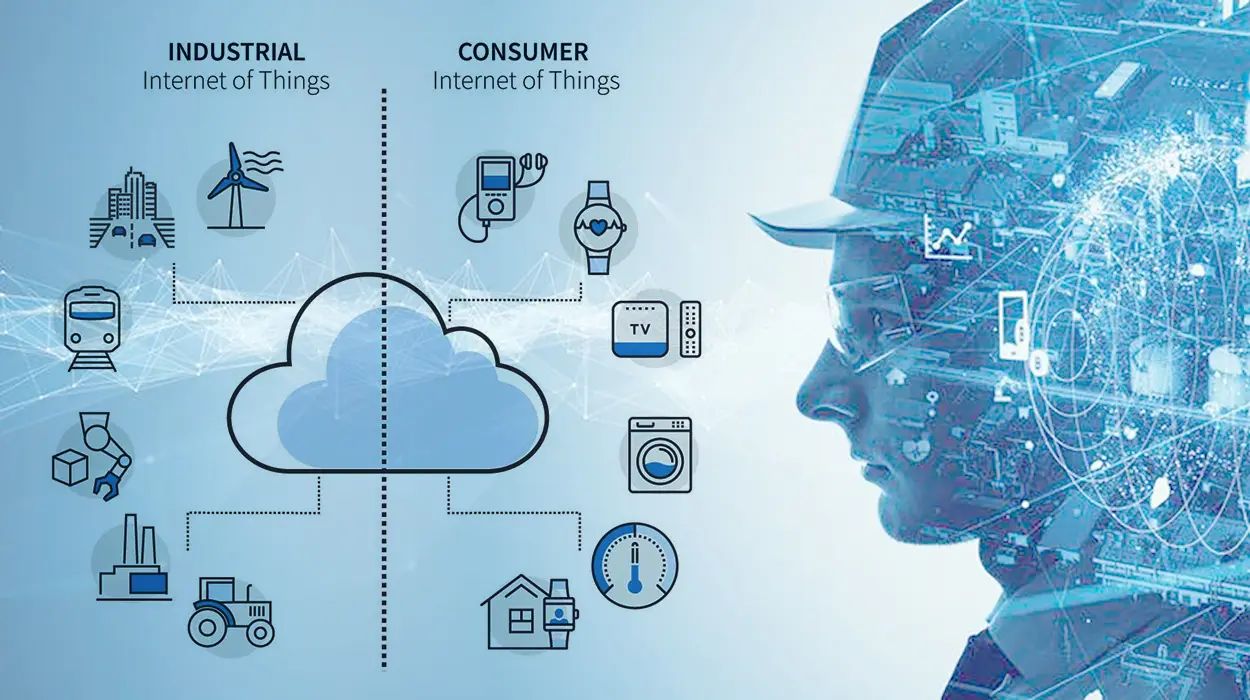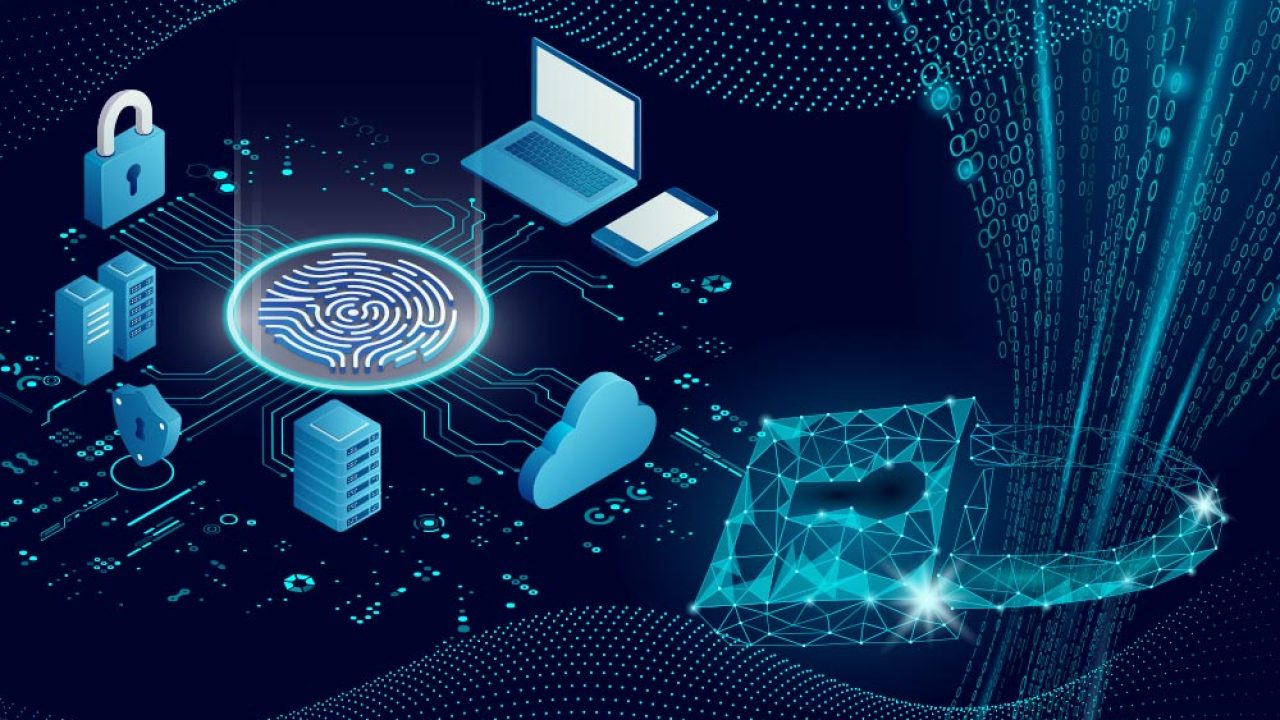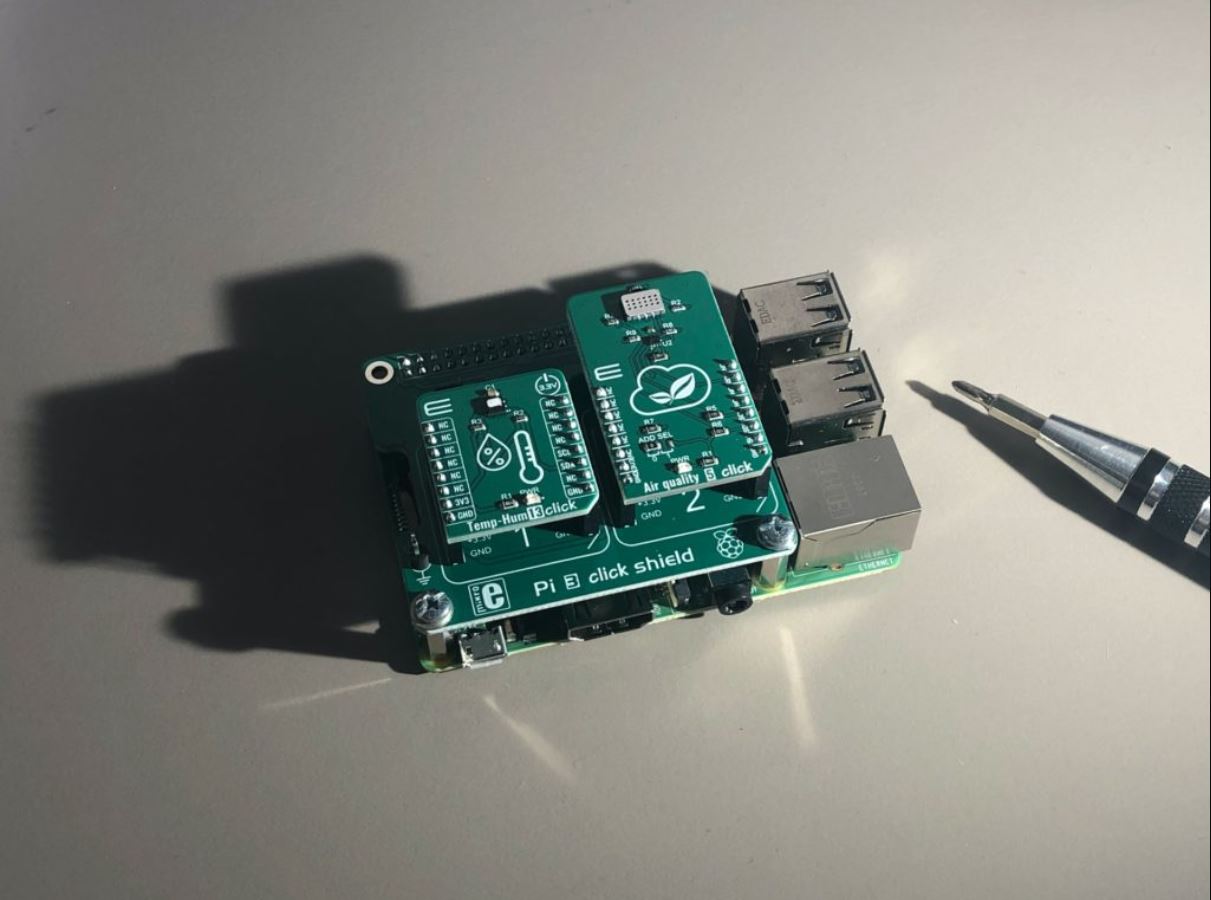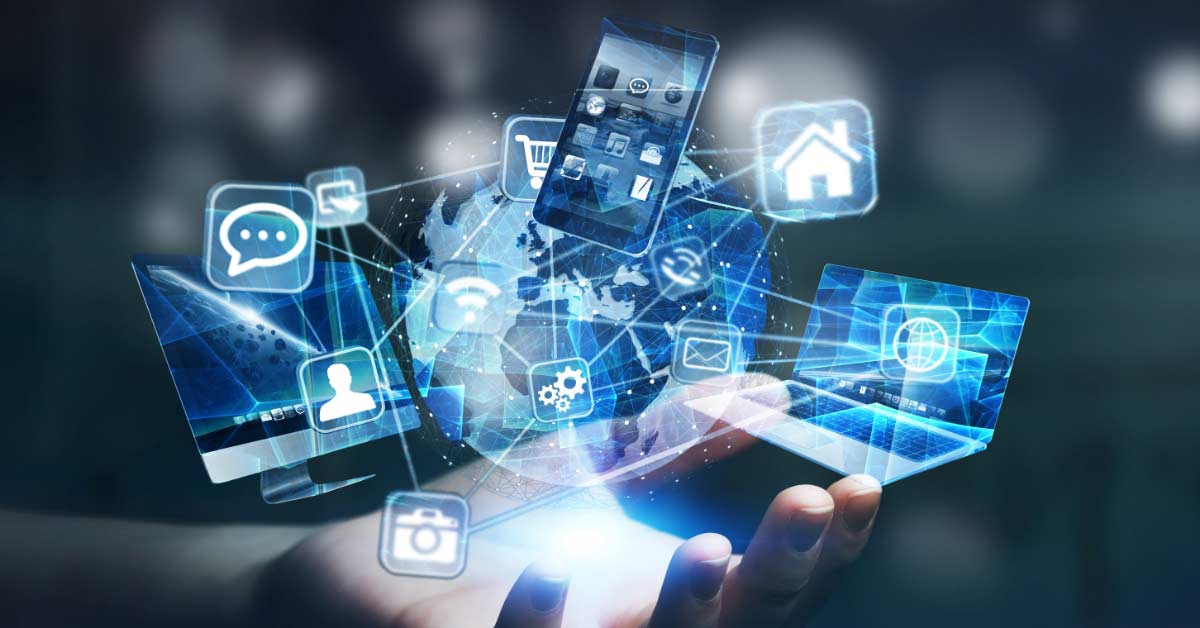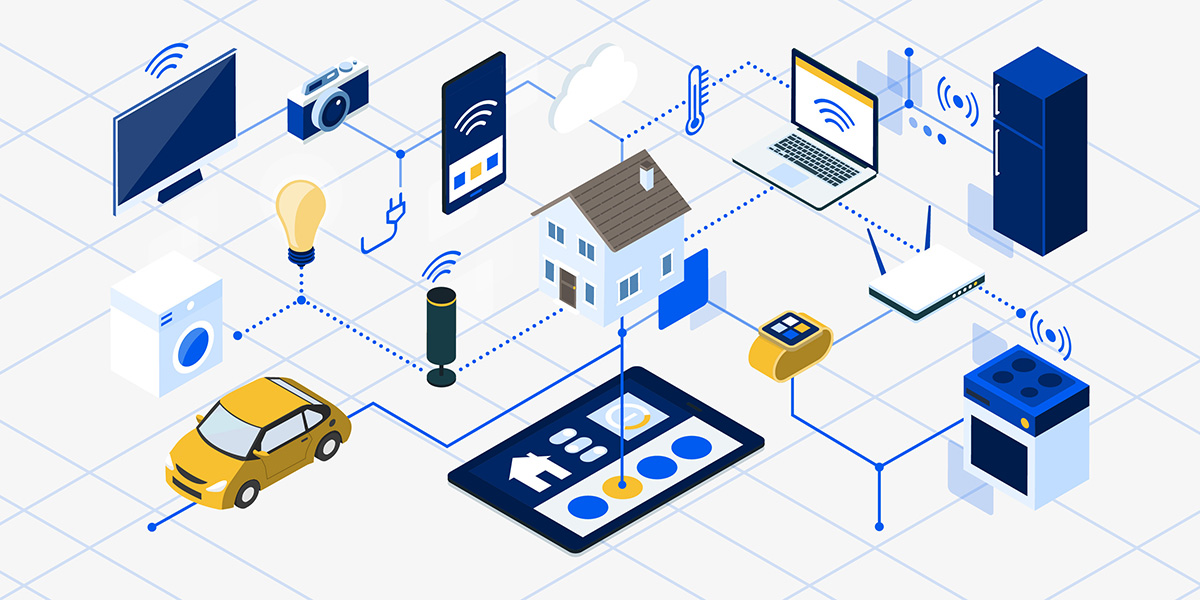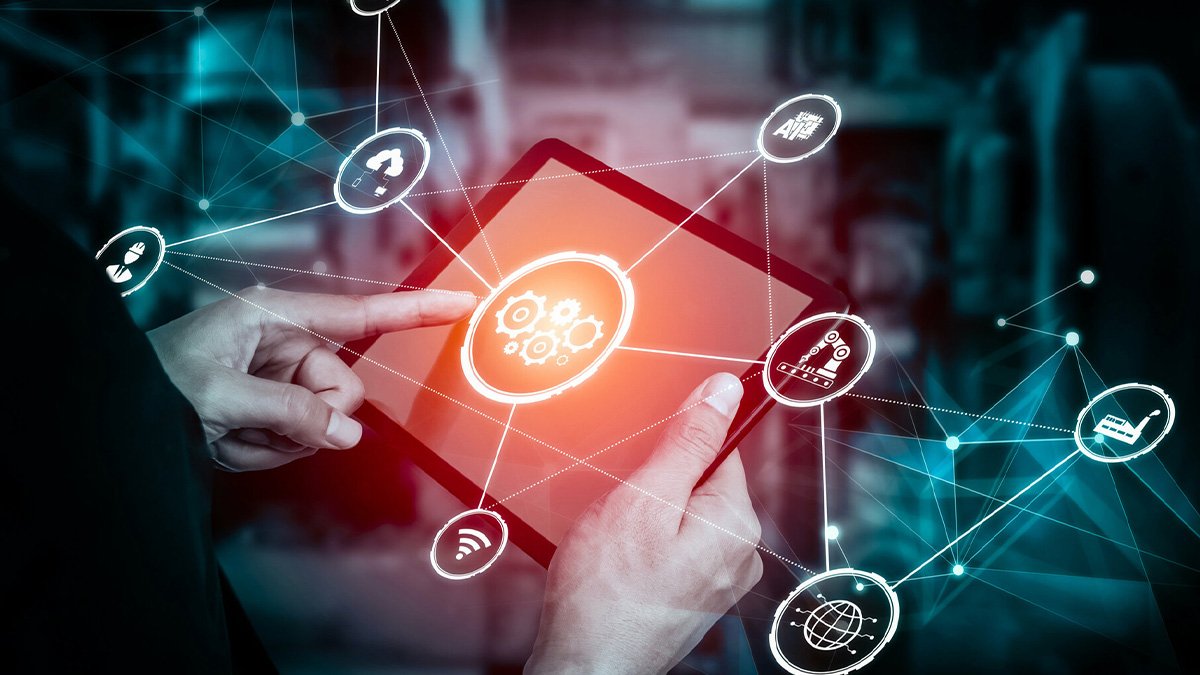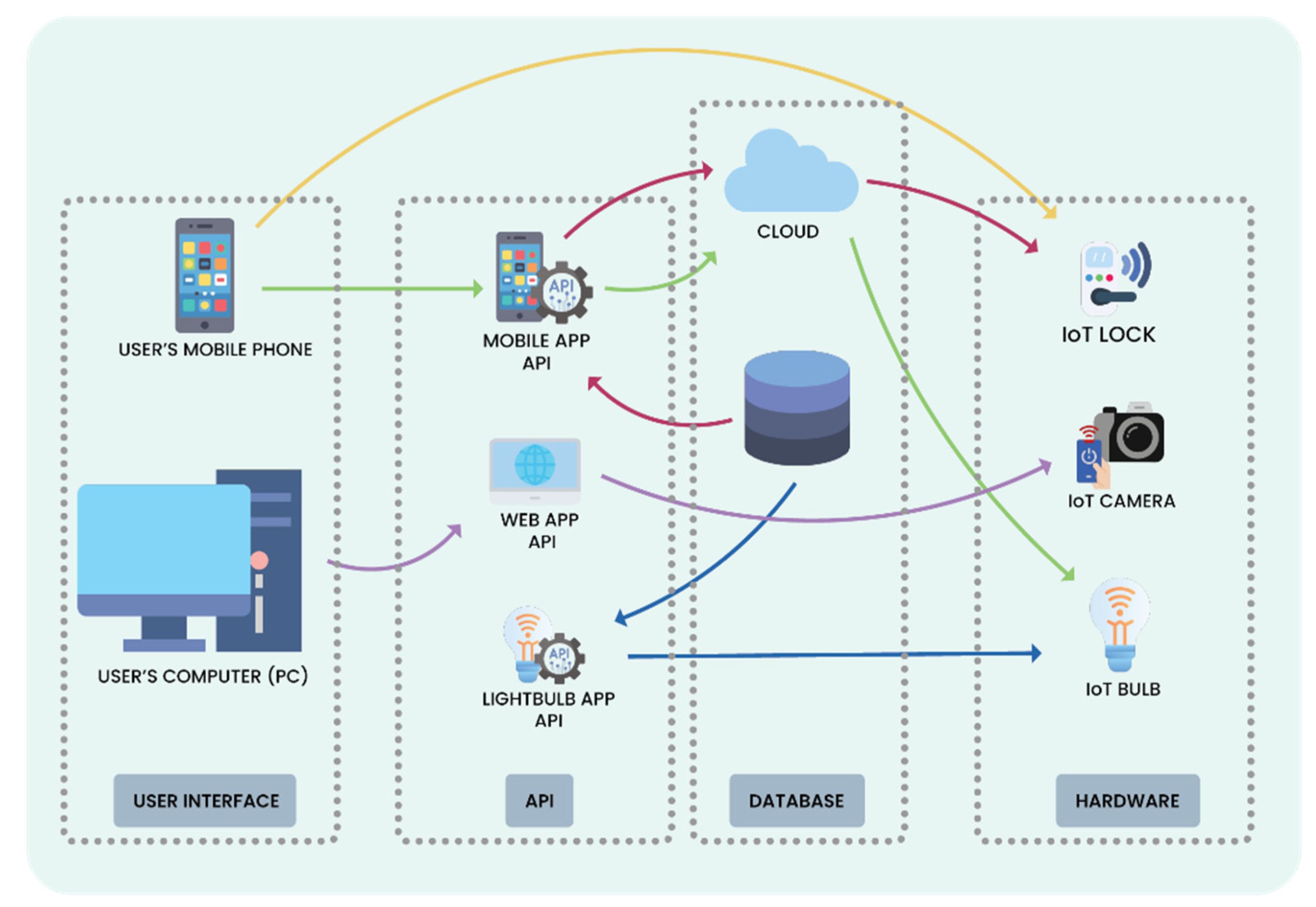Introduction
The Internet of Things (IoT) has revolutionized the way we interact with technology. It refers to the interconnectivity of physical devices, appliances, and systems through the internet, enabling them to communicate and exchange data. The proliferation of IoT devices has rapidly transformed various industries, leading to numerous benefits and opportunities for businesses and consumers alike.
By incorporating IoT devices into their operations, companies can streamline processes, enhance productivity, and improve overall efficiency. These devices, embedded with sensors and connectivity capabilities, offer a wide range of advantages, making them an essential component of the modern technological landscape. From smart homes to smart cities, the IoT has the potential to transform how we live and work.
This article will explore the various benefits of using IoT devices and delve into how they can positively impact businesses and individuals. From improved efficiency and productivity to cost savings and enhanced communication, IoT devices are transforming the way we interact with technology and the world around us. By leveraging the power of IoT, businesses can gain a competitive edge, optimize processes, and enhance customer experiences.
Let’s dive into the different ways in which IoT devices can benefit businesses and individuals:
Improved Efficiency and Productivity
One of the key benefits of using IoT devices is the ability to improve efficiency and productivity in various industries. IoT devices can automate tasks, streamline processes, and eliminate manual errors, allowing businesses to operate more efficiently and effectively.
For example, in manufacturing industries, IoT devices can be used to monitor production lines, collect real-time data, and identify potential bottlenecks or issues. This enables businesses to proactively address problems and improve overall production efficiency. IoT devices can also facilitate better inventory management by automatically tracking stock levels and triggering reorder notifications, reducing the chances of stockouts or overstocking.
Furthermore, IoT devices can enhance productivity by automating routine tasks and freeing up time for employees to focus on more strategic activities. For instance, in the healthcare sector, IoT-enabled devices can automate patient monitoring, allowing healthcare professionals to remotely track vital signs and intervene when necessary. This not only improves patient care, but it also optimizes the time and resources of healthcare providers.
In the retail industry, IoT devices can be used to create smart stores by integrating various systems such as inventory management, point-of-sale (POS) systems, and customer analytics. This enables retailers to streamline operations, optimize inventory levels, and offer personalized experiences to customers.
Overall, IoT devices provide businesses with valuable data and insights that can be leveraged to make data-driven decisions, optimize processes, and enhance overall efficiency. By harnessing the power of IoT, businesses can achieve higher productivity levels and gain a competitive advantage in the market.
Cost Savings
Another significant benefit of using IoT devices is the potential for cost savings across various industries. IoT devices can help businesses reduce expenses, optimize resource allocation, and improve cost efficiency.
One way in which IoT devices contribute to cost savings is through energy management. By integrating IoT devices with energy monitoring systems, businesses can track and analyze energy consumption in real-time. This allows them to identify areas of energy wastage and implement energy-saving measures. For example, smart thermostats can automatically adjust temperature settings based on occupancy, optimizing energy usage and reducing utility costs.
In logistics and supply chain management, IoT devices can provide real-time visibility into the movement of goods, enabling businesses to optimize routes, reduce transportation costs, and minimize delays. With IoT-enabled sensors and tracking devices, companies can accurately monitor the location, condition, and status of their assets throughout the supply chain.
Moreover, IoT devices can streamline maintenance processes, leading to cost savings. For example, predictive maintenance using IoT-enabled sensors can detect equipment failures or malfunctions before they occur. This allows businesses to schedule maintenance activities proactively, minimizing downtime, and reducing repair costs.
In the retail sector, IoT devices can contribute to cost savings through inventory management. By using RFID tags and sensors, businesses can automate inventory tracking and reduce manual stock counting efforts. This helps prevent stockouts, overstocking, and reduces the need for excess inventory, driving cost savings.
Furthermore, IoT devices can enable remote monitoring and remote control of systems and equipment, eliminating the need for on-site visits and reducing maintenance costs. This is particularly useful in industries such as utilities, where IoT devices can remotely monitor meters, analyze consumption patterns, and identify potential leaks or issues.
Overall, the integration of IoT devices enables businesses to optimize resource allocation, reduce energy consumption, streamline processes, and improve overall cost efficiency. By leveraging the power of IoT, companies can achieve substantial cost savings and allocate their resources more effectively.
Enhanced Communication and Connectivity
IoT devices play a crucial role in enhancing communication and connectivity, both within organizations and between businesses and customers. These devices enable seamless data exchange and facilitate instant communication, leading to improved collaboration, faster decision-making, and enhanced customer experiences.
Within organizations, IoT devices can connect various departments, systems, and devices, fostering better communication and information sharing. For example, in a smart office environment, IoT devices such as smartboards and connected calendars can synchronize data, allowing employees to easily collaborate, schedule meetings, and share real-time updates. This promotes efficiency and productivity by eliminating communication barriers and streamlining workflows.
In addition, IoT devices enable real-time data sharing and analytics, providing businesses with valuable insights that can drive informed decision-making. For instance, in retail, IoT devices can collect customer data, such as browsing behavior and purchase history, to personalize marketing efforts and deliver targeted offers. This improves customer engagement, satisfaction, and ultimately, drives business growth.
IoT devices also enhance communication and connectivity in customer service and support. Customer service representatives can leverage IoT-powered tools to obtain real-time information about a customer’s device or product, diagnose issues, and provide faster and more accurate support. For example, in the telecommunications industry, IoT devices can remotely diagnose connection problems, enabling faster resolution and minimizing customer downtime.
Furthermore, in industries such as transportation and logistics, IoT-enabled connectivity enables real-time tracking and monitoring of vehicles, shipments, and deliveries. This ensures transparency, improves supply chain visibility, and enables efficient communication between all stakeholders involved.
Moreover, IoT devices enable seamless integration with other technologies, such as mobile applications and cloud platforms. This allows businesses and individuals to access and interact with IoT-enabled devices from anywhere, anytime. Whether it’s controlling smart appliances through a mobile app or accessing real-time data from a connected wearable device, IoT devices provide a level of connectivity that enhances convenience and accessibility.
In summary, IoT devices facilitate enhanced communication and connectivity within organizations, between businesses and customers, and across different industries. By leveraging the power of IoT, businesses can streamline collaboration, access real-time data, improve decision-making, and deliver personalized experiences to customers, driving business success and customer satisfaction.
Real-Time Data Collection and Analysis
One of the significant advantages of using IoT devices is the ability to collect and analyze real-time data. IoT devices equipped with sensors can gather valuable information from the environment, machinery, and processes, providing businesses with actionable insights for decision-making and optimization.
IoT devices enable businesses to collect data on various parameters such as temperature, humidity, pressure, motion, and location. For example, in agriculture, IoT-enabled sensors can measure soil moisture levels, weather conditions, and crop growth, allowing farmers to make data-driven decisions regarding irrigation, fertilization, and crop protection. This enhances efficiency, reduces resource wastage, and improves overall yield.
In manufacturing industries, IoT devices embedded within machinery and equipment can monitor operational parameters and performance in real-time. This data can be used to optimize production processes, identify inefficiencies, and prevent equipment failures. By leveraging real-time data, companies can implement predictive maintenance strategies, reducing downtime, and improving overall productivity.
The healthcare industry also benefits from real-time data collection and analysis through IoT devices. Connected wearable devices, such as fitness trackers and health monitors, provide individuals and healthcare professionals with real-time health information. This helps in early detection of health issues, remote patient monitoring, and personalized healthcare delivery.
IoT devices also enable data analytics, allowing businesses to gain deeper insights from the collected data. By leveraging machine learning and artificial intelligence algorithms, IoT data can be analyzed to identify patterns, predict trends, and generate actionable recommendations. This opens up new opportunities for process optimization, cost reduction, and revenue generation.
Furthermore, real-time data collection and analysis provided by IoT devices assist in enhancing customer experiences. In retail, for example, IoT-powered systems can analyze customer preferences and behavior to deliver personalized recommendations and targeted marketing campaigns. This increases customer engagement, satisfaction, and ultimately drives sales.
Overall, real-time data collection and analysis offered by IoT devices provides businesses with a wealth of valuable information. By harnessing the power of real-time data, companies can make informed decisions, optimize processes, and deliver personalized experiences, leading to improved outcomes and competitive advantages.
Automation and Control
Automation and control are key benefits of incorporating IoT devices into various industries. These devices enable businesses to automate routine tasks, improve accuracy, and gain precise control over operations and systems.
IoT devices can automate processes and tasks that were previously performed manually, leading to increased efficiency and productivity. For example, in the manufacturing sector, IoT-enabled robots can perform repetitive and labor-intensive tasks with greater precision and speed. This reduces the need for human intervention, minimizes errors, and enhances overall production efficiency.
In the household, IoT devices such as smart thermostats, lighting systems, and security systems offer automated control and convenience. Users can set schedules, adjust settings, and monitor their home remotely, providing a comfortable and secure living environment.
IoT devices also enable remote control and monitoring of equipment and systems. With IoT-enabled applications and platforms, businesses can remotely monitor and control their operations, ensuring smooth functioning and reducing the need for on-site supervision. For example, in the energy sector, IoT devices can remotely manage and control power grids, optimizing energy distribution and minimizing wastage.
Furthermore, IoT devices facilitate integration and interoperability between different systems and devices. This allows for centralized control and coordination, streamlining operations and improving efficiency. For instance, in smart cities, IoT devices can connect various infrastructures such as transportation, energy, and waste management systems, enabling efficient resource allocation and enhancing overall city operations.
Automation and control provided by IoT devices also extend to the healthcare industry. IoT-enabled medical devices and wearables can automate patient monitoring, alert healthcare professionals about critical conditions, and provide real-time data for diagnosis and treatment. This leads to better healthcare outcomes, improved patient care, and reduced hospitalization costs.
Overall, automation and control offered by IoT devices revolutionize the way businesses and individuals operate and interact with technology. By automating tasks, providing remote control capabilities, and promoting interoperability, IoT devices empower businesses to improve efficiency, accuracy, and control over their operations.
Predictive Maintenance
Predictive maintenance is a valuable benefit of using IoT devices in various industries. By leveraging data collected from IoT-enabled sensors, businesses can proactively detect equipment issues, identify potential failures, and schedule maintenance activities before a breakdown occurs.
Traditionally, maintenance activities were conducted based on fixed schedules or reactive responses to equipment failures. However, with IoT devices, businesses can move towards a predictive maintenance approach, which is more efficient and cost-effective.
IoT-enabled sensors can continuously monitor equipment performance and collect real-time data on various parameters such as temperature, vibration, and pressure. By analyzing this data through machine learning algorithms and predictive analytics, businesses can identify patterns and anomalies that indicate potential failures or deterioration of equipment.
By detecting early signs of equipment degradation or malfunctions, businesses can take proactive measures to prevent unexpected breakdowns and minimize downtime. This leads to significant cost savings as unplanned maintenance and production interruptions are reduced.
Predictive maintenance also optimizes the utilization of maintenance resources and reduces unnecessary maintenance activities. Rather than performing maintenance on all equipment at fixed intervals, businesses can focus on specific assets that require attention based on real-time condition data. This improves resource allocation and reduces unnecessary maintenance costs.
Furthermore, predictive maintenance can extend the lifespan of equipment. By identifying and addressing potential issues before they escalate, businesses can avoid costly repairs or replacements. This not only reduces expenses but also maximizes the efficiency and performance of equipment over its operational lifespan.
Predictive maintenance is particularly beneficial in industries where equipment downtime can result in significant financial losses or safety risks. For example, in the aviation industry, IoT devices can monitor aircraft engine performance in real-time, enabling airlines to proactively identify and resolve any issues before they become critical. This ensures the safety of passengers and reduces the risk of costly flight delays or cancellations.
In summary, predictive maintenance provided by IoT devices revolutionizes the maintenance practices in various industries. By leveraging real-time data analytics and proactive measures, businesses can reduce downtime, optimize resource allocation, extend equipment lifespan, and avoid costly repairs or replacements.
Improved Customer Experience
One of the significant benefits of using IoT devices is the ability to enhance the overall customer experience. By leveraging IoT technologies, businesses can gain deeper insights into customer preferences, deliver personalized experiences, and improve customer satisfaction and loyalty.
IoT devices enable businesses to collect valuable data on customer behavior, preferences, and usage patterns. This data can be used to understand customer needs better and deliver tailored products, services, and experiences. For instance, in the retail industry, IoT devices can track customer movements within a store, analyze purchase behavior, and offer personalized recommendations or discounts based on individual preferences.
Moreover, IoT devices enable businesses to provide real-time, personalized communication with customers. Through connected devices, businesses can send targeted notifications, alerts, and updates to customers based on their preferences and location. For example, IoT-enabled beacons can communicate with smartphones to offer personalized promotions or recommendations based on the customer’s proximity to a particular store or product.
IoT devices also contribute to a seamless and connected customer journey. For instance, in the hospitality industry, IoT devices can enable keyless room entry, personalized room settings, and connected room services. This enhances convenience and creates a unique and memorable experience for guests.
Additionally, IoT devices can improve customer support and after-sales service. With IoT-enabled devices, businesses can remotely diagnose product issues and provide immediate support, minimizing downtime and enhancing customer satisfaction. For example, in the home appliance industry, IoT devices can alert manufacturers about potential malfunctions, enabling proactive service calls and faster resolution for customers.
IoT devices also play a crucial role in improving safety and security, thus enhancing the overall customer experience. For instance, IoT-enabled security systems allow customers to monitor their homes remotely, receive alerts in case of suspicious activity, and have peace of mind knowing their property is secure.
Furthermore, IoT devices enable businesses to gather real-time feedback from customers, enabling them to respond quickly to issues or concerns. This proactive approach demonstrates a commitment to customer satisfaction and fosters a positive customer experience.
In summary, IoT devices significantly contribute to improving the customer experience by enabling personalized experiences, seamless interactions, enhanced communication, and improved support. By leveraging IoT technologies, businesses can create unique and tailored experiences that foster customer loyalty and drive business growth.
Health and Safety Monitoring
IoT devices have revolutionized the way health and safety are monitored in various industries. By leveraging IoT technologies, businesses can proactively monitor and address potential health and safety risks, ensuring the well-being of employees and customers.
In industries such as manufacturing and construction, IoT devices embedded with sensors can monitor environmental conditions, such as air quality, temperature, and noise levels. This helps identify potential hazards and ensures compliance with health and safety regulations. For example, IoT devices can automatically detect excessive noise levels in a warehouse and alert workers to wear appropriate hearing protection.
IoT devices also play a crucial role in improving workplace safety through real-time monitoring of equipment and machinery. By analyzing data from IoT-enabled sensors, businesses can detect anomalies or malfunctions that may cause accidents or injuries. This allows for timely maintenance and reduces the risk of workplace incidents.
In healthcare settings, IoT devices enable remote patient monitoring, ensuring continuous health tracking and timely intervention when necessary. Connected wearable devices and medical sensors can monitor vital signs, detect abnormalities, and alert healthcare providers or caregivers in real-time. This improves patient safety, prevents medical emergencies, and allows for early intervention in critical situations.
IoT devices also contribute to safety monitoring in smart homes and smart cities. For instance, IoT-enabled smoke detectors and carbon monoxide sensors can detect potential hazards and immediately notify homeowners or emergency services. In smart cities, IoT devices can monitor traffic, identify accidents or congestion, and alert authorities or drivers to ensure road safety.
Furthermore, IoT devices provide enhanced safety monitoring for vulnerable populations, such as the elderly or individuals with chronic illnesses. Connected devices can track daily activities, detect falls or abnormal behavior, and send alerts to caregivers or emergency services. This helps ensure the safety and well-being of individuals who may require additional support.
Additionally, IoT devices play a significant role in ensuring food safety. Sensors embedded in refrigeration units and storage areas can monitor temperature and humidity levels, alerting businesses if there are any deviations that may compromise food freshness and safety. This helps prevent foodborne illnesses and ensures high-quality products for customers.
Overall, IoT devices enable businesses to prioritize and enhance health and safety monitoring. By leveraging real-time data and proactive measures, companies can prevent accidents, improve workplace safety, monitor patient health, and ensure the well-being of individuals in various settings.
Conclusion
The Internet of Things (IoT) has ushered in a new era of connectivity and technological advancements, offering numerous benefits across industries. From improved efficiency and productivity to cost savings, enhanced communication, and real-time data analysis, IoT devices have reshaped the way we live, work, and interact with technology.
By incorporating IoT devices into their operations, businesses can automate tasks, streamline processes, and optimize resource allocation, leading to higher efficiency and productivity. The ability to collect and analyze real-time data enables businesses to make informed decisions, identify patterns, and implement predictive maintenance strategies, resulting in substantial cost savings.
Moreover, IoT devices enhance communication and connectivity, both within organizations and between businesses and customers. Real-time data sharing and personalized communication enable businesses to deliver tailored experiences and improve customer satisfaction. The seamless integration and interoperability of IoT devices further contribute to a connected customer journey.
Furthermore, IoT devices enable businesses to enhance safety and monitor health conditions in various settings. From workplace safety monitoring to remote patient monitoring and food safety, IoT devices play a critical role in preventing accidents, ensuring well-being, and compliance with regulations.
The benefits of using IoT devices extend beyond business applications. In our everyday lives, IoT devices enable us to create smarter homes, enhance energy efficiency, and improve overall convenience.
In conclusion, the Internet of Things (IoT) has transformed industries by offering improved efficiency, cost savings, enhanced communication, real-time data analysis, automation, and control. As the technology continues to evolve, the potential for innovation and new possibilities is limitless. Embracing IoT devices opens up opportunities for businesses to gain a competitive edge, provide personalized experiences, and drive growth in the ever-connected digital landscape.







